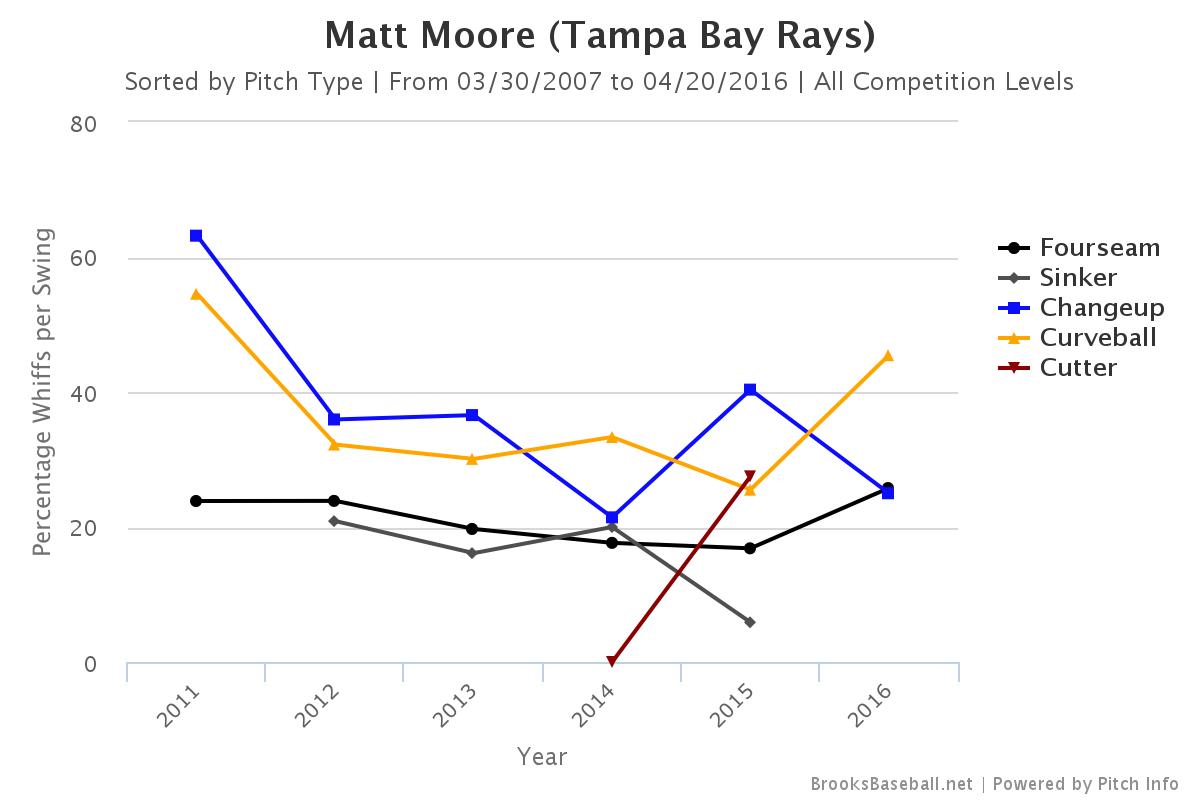Matt Moore Could Be on the Verge of a Breakout

Reach for your dictionary and turn to the “Ps.†Now flip to the page that lists “Post-Hype Sleeper†and you should find a picture of Tampa Bay Rays pitcher Matt Moore.
Oh, you didn’t find that? Maybe you have a different dictionary than I do. In any case...
After impressing during a September cup of coffee and postseason stint in 2011, the former first-round pick produced 2.7 fWAR the following year.
In 2013, Moore’s ERA dropped from 3.81 to 3.29, but this was thanks in large part to a .259 BABIP, as his FIP barely moved from his first year to his second. Still, Moore provided 150 innings worth of roughly league-average pitching (yielding nearly 2.0 fWAR), and the future seemed bright for the then 24-year-old lefty.
Things went downhill after that, as Tommy John surgery ended his 2014 after two starts and pushed the start of his 2015 campaign to July. Things weren’t pretty afterwards. He posted a 5.43 ERA, 4.82 FIP and 4.81 xFIP.
Walk rate issues that had dogged him in his first 347 big league innings continued to be a problem last summer, as he gave a free pass to 8.3% of the batters he faced. A paltry 16.6% strikeout rate, nearly 1.3 home runs allowed per nine (thanks in part to a 39.2% groundball rate), and 22.1% line drive rate all combined to make matters worse.
His average fastball velocity (92.9 miles per hour)Â also more closely resembled that of his 2013 season (93.3) than his rookie year (95.1), per Brooks Baseball.
Through three starts season, the velocity has continued to creep back up (93.6), and the improvement in terms of results has been even better. In 18.1 innings, Moore has posted a 2.95 ERA, 3.01 FIP, and 3.07 xFIP, bolstering a rotation that has arguably been baseball’s best.
All the Whiffs!
While it is dangerous to put too much stock into any statistic this early in the season, strikeout and walk rates are among the quickest to become reliable.
This is good news for Moore, who is fanning 28.4% and walking 4.1% of the batters he has faced (10.3 K/9, 1.5 BB/9). A closer look at pitch-by-pitch data, which builds a larger sample more quickly and is thus even more reliable in small samples, indicates the improvement (especially in terms of the strikeouts) is not a sequencing fluke.
Moore is 15th in the Majors in whiffs per pitch (12.9%) and 25th in terms of whiffs per swing (28.7%), and the catalysts have been his four-seam fastball and curveball.
As you can see in the chart, Moore is getting whiffs more frequently with both pitches, reaching a career high in terms of fastball whiff rate and posting his highest curve whiff rate since his 2011 cameo.
He is also throwing both pitches more often than he did in his previous full big league seasons. From 2012 to 2013, he threw his fastball 55.1% of the time and his curveball 18.2% of the time. This season, his fastball usage rate is at 56.3%, while his curveball usage rate has jumped to 23.2%.
He is also getting more horizontal movement on his fastballs and more horizontal and vertical movement on his curves.
It’s early yet, but if Moore continues at his current pace, he could easily reach the heights anticipated at the beginning of his career.



















